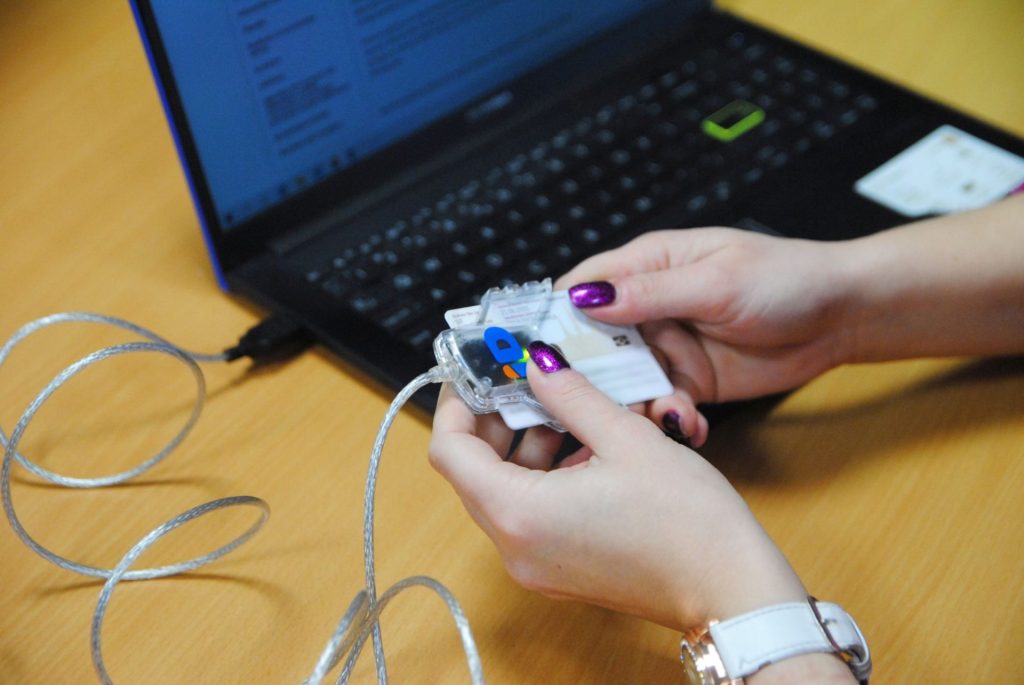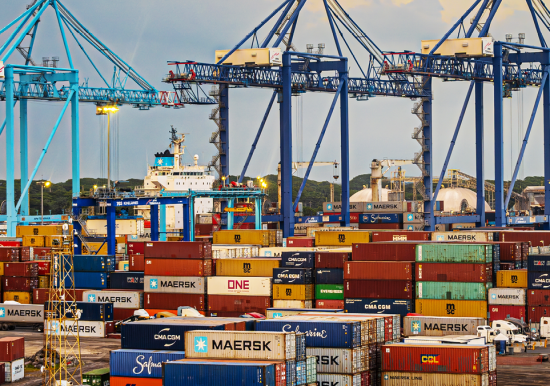
Driving Digital Transformation in Latvia
Latvia has moved up the 2023 CGGI’s rankings for Data Capability by nine places, from 34th to 25th. Gatis Ozols, Deputy State Secretary on Digital Transformation Affairs, and Government CIO of Latvia, sheds light on how governments can successfully digitalise and strengthen public services even during uncertain times.
Latvia’s Approach to Digital Transformation
Some years ago, the Latvian government decided to make a strategic investment in public sector digital transformation, to make our public services digital by default. We saw this as a way to solve the challenge of making our services more accessible.
Two-thirds of Latvians live in regions outside the capital city. It can be inefficient for government to set up service centres everywhere, particularly in rural areas. Moving away from the large public service buildings of the past, we have partnered with regional municipalities to provide points for citizens to access central services digitally. There are service desks, such as in regional libraries, where municipality workers act as assistants to help citizens if they cannot perform self-service. If you need to consult, say, with the State Revenue Service or Social Security Service, you can have an online meeting from one of these centres, and you do not need to go to the institution itself. In this way, we are using technology to change the delivery model of government services to make them more efficient.
Today, some 87.7% of our services are available digitally. Around 84% of Latvians use e-government services, which exceeds the EU average of 65%.1 Our recent survey on user satisfaction on e-government services scored an average of 70% in satisfaction levels—an encouraging sign that Latvians are happy with and able to access public services online.2
A Conducive Environment for Change
Although the COVID-19 crisis has been the best driver of change in recent years, Latvia’s digital transformation began even before the pandemic.
Within the public sector, there was a business-driven need to work more efficiently and to provide better services to our citizens. It helps that Latvia does not have a very complex administrative structure: we only have the national government and municipalities, so we can implement horizontal, nationwide initiatives quite easily. We also made reforms two years ago to reduce the number of municipalities from 119 to 43. There are also strong relations between agencies, NGOs, and government. All this makes it easier to create partnerships. This is one advantage of being a smaller country.
There was also public demand for more modern ways to use government services. The banks were pioneers in this regard, showing how complex services can be delivered digitally. So, we took the banks as role models when developing and rolling out digital public services. We were able to partner with them to use their authentication tools to allow citizens to switch easily from banking to government services.
Strategic Priorities
In 2021, Latvia adopted the Digital Transformation Guidelines for 2021-2027 as our national strategy. As a country, Latvia will not be a highly developed, large-scale industrial economy. Instead, we will focus on building up our knowledge and data economy.
The Guidelines focus on development towards two broad goals. One is the implementation of next-generation technological infrastructure that society will need: from telecommunications, such as our 5G rollout, to security needs, quantum computing, artificial intelligence (AI) and so on, including investments in business and innovation. The other aspect we focus on is building up the essential knowledge and skills our people will need in the digital economy and elevating these to a high level of saturation.
These are not just broad, horizontal guidelines—we have tried to be very sector specific. We engaged with each vertical sector (such as healthcare, social security, and so on) to see where their potential for digital transformation is, what their strategies are, and what their role is in this overall shift. The Guidelines were not written by some government official at their desk, they were developed through discussions and workshops with each sectors. This process was vital.
Latvia’s pandemic recovery efforts also aim to complement the Guidelines and support digital transformation in the public and private sector, and close the digital skills gap. More than EUR 384 million has been earmarked for the Latvian Recovery and Resilience Plan. Some recent milestones we achieved include the implementation of a regulatory framework on the organisation and implementation of remote learning, and the development of the digital services economy.3
Enabling and Upskilling Latvians
Right now, we are focusing on equipping citizens to be better digitally enabled. To this end, we provide all citizens with personal digital identities and digital signatures free of charge, which they can use whether in connection with government or business. Today, around 58.7% of Latvians own a government issued digital identity. For some government services, they can also use the digital identity tools provided by banks, which are also widely accepted.
In the beginning, we saw how the private sector was bringing people onboard with digital services, especially those in certain groups such as the elderly or people with disabilities. So we formed coalitions to develop digital skills. One early initiative was training a network of more than 6,000 digital agents, all across the country, to help citizens with digital government services. We are now establishing digital innovation hubs to mentor and help companies to digitally transform their businesses. The digital innovation hubs aim to support at least 7,000 enterprises and provide training courses to 3,000 of them by 2026. Financial instruments such as loans and grants have also made available since 2022 to support businesses to gain access to Industry 4.0 solutions.4

The Latvian government is also placing a strong emphasis on rescaling and retraining, through different long- and short-term programmes, as well as offering vouchers and support initiatives for both citizens and businesses. In the past two years, we have reformed our education system towards a competence model. Technology is now an integral part of all educational processes and delivery—and not introduced separately in a computer training class.
One of Latvia’s best recognised accomplishments is our engagement with women in technology. One globally recognised initiative, Riga Tech Girls, has NGOs in partnership with tech companies to attract women and girls to technology, with training, mentorship, and other programmes. We see a lot of women motivated to change their careers as a result. Around 23% of our ICT specialists in the country are women, as compared to the EU average of 19%.5
We also have programmes for unemployed people and those at risk, to help them upskill.
Readying the Public Sector for Transformation
Latvia is developing special programmes to build digital skills and capabilities in the public sector. For us, this is a significant investment, amounting to around EUR 6-8 million. We are working with our state administration training school to develop programmes on the use of digital for various aspects and for different contexts.
There will be different levels of technology and digital transformation capabilities we want to develop that will go beyond just technical know-how and coding, or how to use the data for analysis. An important priority is training to help policymakers consider how to use technology for transformation. This essential next phase is more about transformation and less about specific technologies. It will not matter that we have nice technology tools if our policies are old-fashioned; we would lose potential benefits for the government and country.
Governing the Digital Future
One area Latvia has invested in is the use of AI and machine learning in public services. An example of this is image recognition for road safety. We have devices that detect speeding automatically. We also have a unified chatbot platform for public agencies, with some ten chatbots that can share knowledge with one another, to assist citizens receiving public services. The State Revenue Service is also using AI for tax risk management, fraud detection, and processing of tax claims. AI is also used to automatically transcribe our cabinet hearings in Latvian.

About 15 years ago, we made a strategic investment in the digitalisation of smaller languages, because we saw that the big tech companies were focusing on the major languages. We realised that if we did not do this for Latvian or other minor languages, they would disappear in the digital era. So we invested heavily in research, and in private companies that specialised in language technologies. We also gathered language resources to make them publicly available for training. Now, these are being used in the next wave to train artificial intelligence. Today, small language technology development is one of the core activities of Latvia’s educational and business sectors.
Right now, we cannot leave decision-making to AI, but AI can still help to improve our decisions. As we begin to use more automated decision-making processes, we must consider issues such as the algorithms’ inherent biases, to ensure fairness and non-discrimination. To mitigate such risks, we are developing an Artificial Intelligence Act to regulate, certify, and oversee high-risk AI. This is an important foundation in order to be ready for the next decade of AI development. It is also important for the government to make sure that AI has human oversight. AI tools such as ChatGPT can make up facts in a very confident way that often can be false. So we will need to have the right skills to critically evaluate the results we get.

In Latvia, we believe that the citizen is the one who owns their data, and should be able to give or withhold permission for its use. The ability of citizens to control their own data is something we need to secure as we become a data economy and the public and private sectors begin to exchange more data. One way to do this is to anonymise the data so it is discoverable and accessible for wider research without compromising privacy.
In Europe, there is a range of approaches to how governments should take care of the personal data of citizens that it manages. Privacy is not always regarded in the same universal way: there are cultural differences. In Latvia, as in the Nordic countries, there is the idea that once a government institution has my information, another institution should not need to ask me again for that information, they should just give me the end service that I am entitled to. For example, large families of more than three people are entitled to special benefits, such as electricity or tax rebates. These are automatically applied by the government, based on information it has collected, without any additional approval or application needed from the citizen.
In some countries, people would not be happy if the government took such an approach, or even if it were to issue digital identity numbers, as Latvia does. It is often a matter of whether citizens see the value in these approaches, and whether the government is seen as abiding by values and principles they can trust.
Looking to the Future
We have taken a holistic government approach to design our national digital transformation strategy. In the next phase, we want to shift our perspective from digitising public services to enabling a data economy, by facilitating the uptake of data and its use. For example, we are looking to provide government data to the private sector so it can use it to develop new products and services.
In Latvia, we also see that to deepen digital transformation, we need to create ecosystems that bring together the public, private, and research or academic sectors. We also see that such ecosystems and networks spur more people and more industries to also be digitally transformed by involving them. Last year, we established a Memorandum of Understanding (MOU) and an ecosystem to develop the metaverse, a strategic emerging technology. This has attracted both local companies and global players.
Of course, we will continue to evaluate and evolve our public service delivery model, and explore how emerging technologies can be used for the benefit of our citizens.
Making Digital Transformation Work
In a small, compact country like Latvia, attracting the right talent is an ongoing challenge. Individually, our institutions offer only a limited scope of work that makes it difficult to attract top talent in data analytics, user experience design, or other tech-related expertise. However, by consolidating some government processes into cross-functional, cross-sectoral themes, we can create government-wide competency centres that can now provide a more challenging and attractive environment for top talent.
But fewer and fewer problems can be solved by governments alone. We need to design holistic approaches to tackling challenges, and build partnerships to address them. A core competency of government is to be open and engaged with other actors. We should be thoughtful about which areas governments should take care of, and which can be better tackled by big tech or by civil society.
In our experience, it is important to find a common goal for the government, private sector, and civic groups to work towards together, which they cannot achieve on their own. Partnering with other sectors allows governments to see new trends and developments that may be outside of the public sector’s perspective. We can then jump in from the government’s view with public challenges for private and civic groups to work on and begin to pilot some solutions.
Emerging technologies evolve rapidly, and their successful use is an iterative process—they cannot be rolled out from day one. It is vital for governments to have a safe way to test emerging technologies, new capabilities, and fresh ideas, and to ensure that those involved in these experiments will not be punished in any way for unsuccessful attempts. While there will always be systemic matters that government should take care of, there must also be spaces for small-scale experimentation and grassroots activities to take place. These build confidence and trust and could later be implemented on a larger scale.
For digital transformation to take place, it is essential to have strong political support and leadership. Institutional leaders should also understand how their organisations need to change to work in new ways. There needs to be foresight—to see future-oriented scenarios and trends and how these might apply to present circumstances. Sometimes, we spend a lot of energy solving problems with current tools that might no longer be a problem in a year or two. Public sector leaders should have a mindset of being able to see different future options and possibilities.

Endnotes
- Latvia’s DESI 2022 Country Performance—https://ec.europa.eu/newsroom/dae/redirection/document/88703
- Latvia’s E-index of state institutions and municipalities—https://www.varam.gov.lv/lv/media/33915/download?attachment
- Latvia’s DESI 2022 Country Performance—https://eceuropa.eu/newsroom/dae/redirection/document/88703
- ibid
- ibid

Gatis Ozols
Deputy State Secretary on Digital Transformation Affairs Government CIO, Latvia
Gatis Ozols is the Deputy State Secretary on Digital Transformation Affairs, and the Government CIO of Latvia. He is responsible for developing and steering the national and government digital transformation policy and strategy. The focal areas of Ozols and his team include public service digital transformation, governance of public sector ICT, using government as a platform for implementation, and building ecosystems to fuel the data economy.
Ozols has more than 15 years of experience in digital government in various positions. He has launched several EU-recognised award-winning initiatives, such as digital awareness programmes for citizens and benchmarks for digital government.
More Stories


Global Influence & Reputation Country Snapshot: Türkiye

